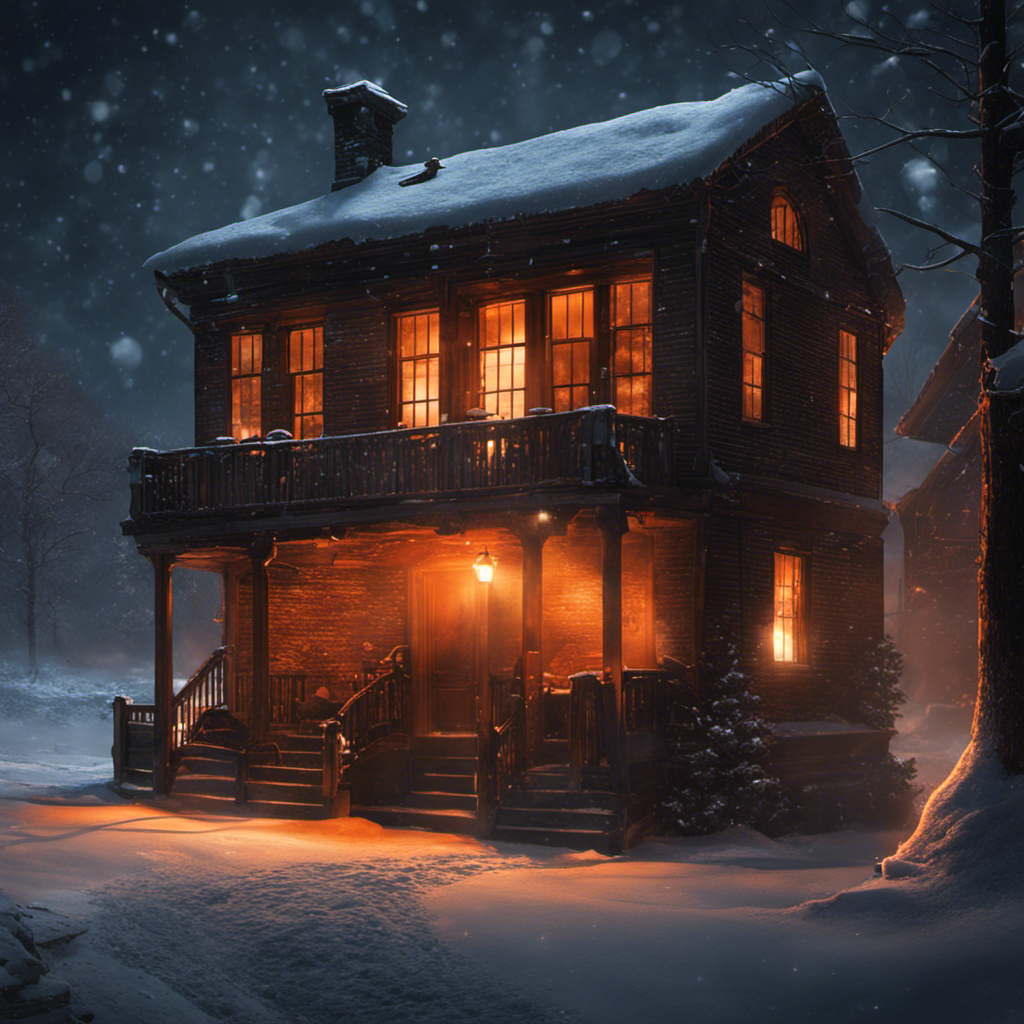Are you experiencing the frustrating problem of your furnace running but not producing any heat? This article will provide you with possible causes and solutions to address this issue.
From thermostat malfunctions to clogged air filters and pilot light outages, we will guide you through troubleshooting steps to help you restore the warmth and comfort in your home.
Don’t let a malfunctioning furnace leave you in the cold – let us assist you in resolving this problem efficiently and effectively.
Key Takeaways
- Malfunctioning thermostat can cause furnace to run but no heat
- Low or dead battery can cause thermostat malfunction
- Clogged air filter restricts airflow and can cause overheating
- Pilot light ignition failure can prevent heat production
Possible Issue: Thermostat Malfunction
One potential cause for a furnace running but no heat is a malfunctioning thermostat. A thermostat is a crucial component of your heating system as it controls the temperature and signals the furnace when to turn on and off. If the thermostat is not working properly, it may not be sending the correct signals to the furnace, resulting in no heat being produced.
In such cases, a thermostat replacement may be necessary. It is recommended to seek professional inspection and assistance to accurately diagnose the issue and determine if a thermostat replacement is needed. A professional inspection will ensure that all other potential causes are ruled out before proceeding with the replacement. Trusting the expertise of professionals will help address the issue effectively and ensure your furnace operates efficiently.
Potential Solution: Check the Thermostat Settings
To troubleshoot the issue of a furnace running but no heat, it is important to check the thermostat settings. Start by examining the thermostat battery. A low or dead battery can cause the thermostat to malfunction, resulting in a lack of heat. Replace the battery if necessary to ensure proper functioning.
Additionally, check the thermostat calibration. Over time, the thermostat may become misaligned, causing it to inaccurately read the temperature and incorrectly control the furnace. Use a separate thermometer to compare the temperature readings and adjust the thermostat calibration accordingly.
By addressing these potential issues with the thermostat settings, you can potentially resolve the problem of a furnace running but no heat.
Remember to always prioritize safety and consult a professional if needed.
Possible Issue: Clogged Air Filter
A possible issue with a furnace running but no heat is a clogged air filter. When the air filter becomes clogged with dirt, dust, and debris, it can restrict the air flow, causing the furnace to overheat and shut down. This air flow restriction prevents warm air from circulating properly, resulting in no heat being produced.
To resolve this issue, it is important to regularly check and clean or replace the air filter as part of routine furnace maintenance. By doing so, you can ensure proper air flow and maximize the efficiency of your furnace. Regular maintenance not only prevents clogged air filters but also helps to extend the lifespan of your furnace, ensuring a comfortable and warm living space.
Potential Solution: Replace or Clean the Air Filter
The most effective solution for a furnace running but no heat is to replace or clean the air filter. Regular air filter maintenance is crucial to ensure proper airflow and optimal performance of your furnace.
Over time, the air filter can become clogged with dirt, dust, and other debris, restricting the flow of air and causing the furnace to run without producing heat. By replacing or cleaning the air filter, you can improve the efficiency of your furnace and restore the heat output.
It is recommended to perform this maintenance task regularly, ideally every 1-3 months, depending on the type of filter and the level of air pollution in your home.
In addition to air filter maintenance, it is advisable to schedule a professional furnace inspection to identify and address any other underlying issues that may be causing your furnace to run but not produce heat.
Possible Issue: Pilot Light Out
Possible Issue: Pilot Light Ignition Failure
If your furnace is running but not producing heat, one possible issue could be a pilot light ignition failure. The pilot light is a small flame that ignites the gas supply in your furnace, allowing it to produce heat. If the pilot light is out, it means that the gas supply is not being ignited, resulting in no heat being produced.
There are a few reasons why the pilot light may fail to ignite. One possible cause could be a gas supply issue, where there is a problem with the gas flow to the furnace. Another potential cause could be a faulty ignition switch, which is responsible for lighting the pilot light. If the ignition switch is not functioning properly, it will prevent the pilot light from igniting.
If you suspect that the pilot light is out, it is important to contact a professional HVAC technician to diagnose and fix the issue. They will be able to safely relight the pilot light or address any underlying problems with the gas supply or ignition switch.
Potential Solution: Relight the Pilot Light
Regularly check and relight the pilot light to ensure proper functioning of your furnace and the production of heat. If your furnace is running but there is no heat, it is likely that the pilot light has gone out. The pilot light is a small flame that ignites the gas burners in your furnace. When it goes out, the furnace cannot produce heat.
To relight the pilot light, follow these furnace troubleshooting steps.
First, locate the pilot light assembly, usually found near the bottom of the furnace.
Turn the gas valve to the ‘off’ position and wait for five minutes to allow any remaining gas to dissipate.
Then, turn the gas valve to the ‘pilot’ position and press the reset button while holding a lit match or lighter near the pilot.
Once the pilot light is lit, hold the reset button for about one minute to ensure that the flame stays lit.
Finally, turn the gas valve to the ‘on’ position and test the furnace to see if it is producing heat.
Frequently Asked Questions
How Can I Determine if the Thermostat Is Malfunctioning?
To determine if the thermostat is malfunctioning, you can perform thermostat troubleshooting. Common thermostat issues include incorrect temperature readings, unresponsive controls, and faulty wiring. Properly diagnosing the thermostat issue can help restore heat to your furnace.
What Should I Do if the Thermostat Settings Appear to Be Correct but There Is Still No Heat?
If the thermostat settings appear to be correct but there is still no heat, it is important to follow troubleshooting steps to identify common furnace problems. This can include checking the air filter, ensuring proper fuel supply, and inspecting the ignition system.
How Often Should I Replace or Clean the Air Filter in My Furnace?
It is recommended to replace or clean the air filter in your furnace every 1-3 months, depending on usage. Signs of a dirty air filter include reduced airflow, increased energy consumption, and decreased indoor air quality.
How Can I Tell if the Pilot Light Is Out?
To troubleshoot pilot light issues, check if the flame is out or weak, ensure the gas supply is on, and clean the pilot orifice. These are common furnace issues that can prevent the heat from being produced.
Is It Safe for Me to Relight the Pilot Light on My Own?
It is generally safe for homeowners to relight the pilot light on their own as long as they follow proper pilot light maintenance guidelines and troubleshooting steps for the thermostat.


